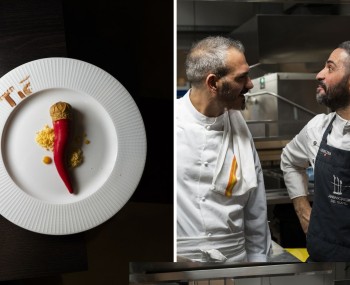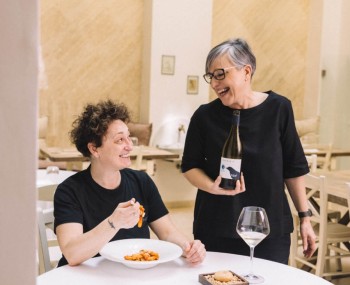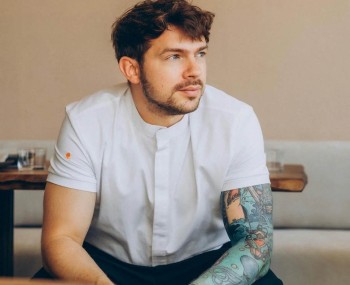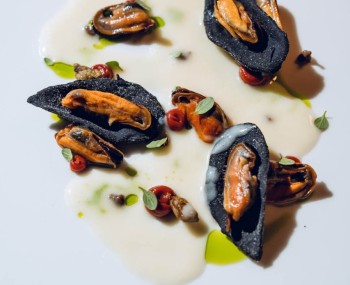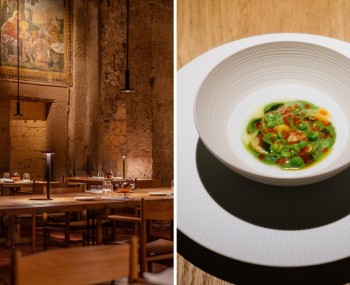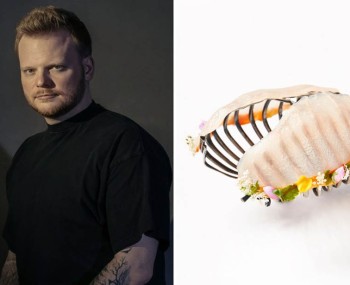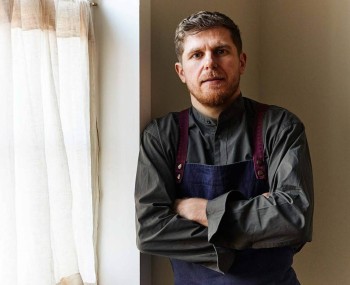A hotel capable of structuring itself vertically, welcoming both Romans on aperitivo and gourmands on culinary retreat. At Acquolina you'll tour 3 continents in 3 hours of dining, but that's not the only surprise for those staying at The First Arte: amid 200 modern works and bistros 6 floors above the ground, the welcome here has a personal stamp, beyond the clichés of the area's hotellerie.
If luxury equals a sense of freedom, as a certain Karl Lagerfeld liked to reiterate, it is also true that today glossy suites, wow-effect furnishings and spa areas tailored to pretentious travelers are not enough to make a 5-star hotel a chosen destination of international comings and goings. Today, true luxury lies in the ability to make oneself recognizable, dodging the usual inflated formulas of “copy&paste” business. And it is precisely thanks to this personal stamp that, in a street half-hidden by the Capitoline triad of Piazza di Spagna, Via dei Condotti and Flaminio, one of the boutique hotels most frequented by Romans has taken root, beyond the foreign elite on the hunt for high-end stays in the City of Rome.


Given the premises, it would be easy to open the discussion on The First Roma Arte by pinning down the awards it has received over the past few years. What we are interested in is, instead, to frame its ability to structure itself vertically, attracting a clientele ranging from the young group in the aperitif phase to the lone gourmand in culinary retreat. We are talking, not coincidentally, about theonly hotel complex in Rome with an in-house 2-Michelin-starred restaurant-Acquolina, led by chef Daniele Lippi-to which is added the “smart dining” formula of Acquaroof Terrazza Molinari, where the gaze plunges straight over the city skyline six floors above the ground.



“What is important to us is to replicate a clearly legible signature everywhere. It applies as much to haute cuisine as it does to the proposal of an immediate, yet curated meal,” says Benito Cascone, restaurant manager of the sign with a string of transcontinental backgrounds, from Le Manoir Aux Quat'Saisons to Le Pavillon Ledoyen and the Mirazur. "Classic example? The spaghettone alle vongole veraci to be savored on the rooftop, where the menu line travels expeditiously and the product arrives fresh in the morning from the fishing boats of Anzio. So, selection and research as well in the apparent simplicity of the typical seafood entrée. Locals come to spend two hours of disengaged relaxation and here they find the right climate all year round, even in winter: you almost feel like you're at the sea while looking out over the rooftops of the Capital."


Overlooking helps, the team plays the trump card of transversality. “They seem trifles, but instead they are highlight details: those who grasp a precise identity then return." After all, the interchange of talent follows a nimble “maison” practice: "The new recruits ‘work out’ at Aquaroof's Bistrot, although the ultimate goal is to work in the dining room at Acquolina. This gives them plenty of time to familiarize themselves with the structure step by step, to train their speed and reflexes in contact with the public." And here we come to the crux, that training that so many talk about and in which few are really willing to invest: mainly young people work at The First , from the front desk to the gourmet, passing through the communication figures and the mixologists led by bar manager Alessandro Grimaldi (creator of an intriguing drink list inspired by the constellations, “Il Cielo su Roma”, ed.) A fluke? Hard to believe, given the age standards of the area's hotellerie: dining at the bistellato immediately jumps out at a group composed largely of professionals under 30.


The variety of gastronomic options (which we will elaborate more on in a few lines) also alternates with the visual detachment from the bottom to the top, as each level of reception exhibits the cycle of works by a major Italian artist, for a work-in-progress display that exceeds 200 contemporary masterpieces. Literally, "a night at the museum ” for those who choose the stay.
The hotel: art as a backdrop and a distinctive welcome that does not follow clichés

Art, we said, anticipated since the name on the sign and then spread throughout the entire building of The Pavillions Group, to the point of generating effects that dilate the perception of space. It starts with the abstractionism of the author Licia Galizia on the second floor and continues with Giusy Lauriola 's dreamy landscapes on the third, where the fusion of hues and resins builds a bridge between the living area and the suite bedrooms; going up to the fourth, the expressive power of chiaroscuro in Giovanni de Angelis ' exhibits is striking, while the fifth is dedicated to Angelica Romeo, with paintings centered on the gesturality and “3D” plasticity of the inserts.


Senonché the same dynamism invests the architecture, aided by the recent intervention of Studio Marincola. Imagine, from the outside, a 19th-century aristocratic residence that combines secluded location with proximity to the vital habitat of downtown. Well, stepping through the entrance gives the feeling of entering a private palace that, however, squeezes modernity into a warm-toned embrace, with intimate reading rooms and the new Acqualounge bar (capable, within a short time of its debut, of catalyzing the attention of outsiders for a break from the daily hustle and bustle or a business meeting).


Entering the bubble of relaxation, the hallmark of the 26 rooms and suites is undoubtedly spaciousness, along with a range of attentions particularly appreciated by regulars. One need only think of the Pillow Menu, with a fair assortment of patterns and related scented essences to aid night's rest; not least, the comfort of the velvet sofas, bathed in natural light from the outdoor courtyard that reaches into the living room; finally, the recycled wood keys in combo with additional environmental strategies (see the soap containers made from corn bioplastic). The wellness center? Sometimes it “is included” directly in the accommodations. This is evidenced by the Spa Suite, bookable with sauna and jacuzzi, plus the possible extra of a privileged view over the rooftops of Rome.



Yet, if we had to highlight the aspect that really adds depth to the experience, we would cite en bloc the breakfast: the one at The First remains one of our best Roman awakenings, with a banquet set up at the table instead of the usual buffet formula. Among the pluses are a selection of 5 types of bread (even already toasted!) to go with Giorgio Poeta's honeys, numerous jams, warm puff pastries, fresh proximity ricotta and Isigny butter. The yogurt is white, in strictly natural versions, and the krapfen overflow with cream flavored by vanilla bean. On the savory front, the brigade freshly prepares a few a la carte express dishes, among which we recommend the omelet with the filling of the day and avocado toast; all arranged in plain view, in front of antiques brushed by the morning sun.

Spoiler alert: not far from The First Arte rise the two associated hotels, The First Dolce and The First Musica, worthy of a focus of their own for design and gastronomy. We come, then, to Acquolina, a top destination for on-site dining.
Acquolina: what it's like to dine at Rome's only two-Michelin stars hotel restaurant
We've told you extensively about Acquolina here on the tasting menu, but the 2-star machine operated by restaurant manager Andrea La Caita-with Daniele Lippi and Benito Cascone at the fires and reception, respectively-is in full swing, and it's worth trying to photograph it as a whole beyond the single bite.


First and foremost, the guest is made a participant in something that usually remains in the rear of the kitchen: the “hidden stages” of elaboration of the dishes are in fact presented by way of small previews-not by bringing a cart into the room at the end of cooking, but by showing live the stages of the evolving matter. It happens, for example, with roveja miso, where wild peas originating in Central Italy -treated with natural molds and fermented for 5/6 months- give rise to a dark soy-like flavor enhancer. In a nutshell, Asian school and homegrown product: the jarred preparation ends up right in front of the diners, “before being used in the marinating of a skewer of cuttlefish and lardo di colonnata, which we then sear over charcoal,” the chef explains. Have you ever eaten a fish kebab? This is Lippi's tribute to Turkey, part of two tastings that explore the entire Mediterranean basin in stages. On the side, the head of a cuttlefish composes a tartare lying on a delicious flatbread made with yogurt and za'atar (a well-known Turkish spice blend, ed.).

Thus, little by little the leavened products go from mere extras to main actors, thanks to the operation of gustatory archaeology that has always guided the chef's hand. This is confirmed by the “ancestral” loaf of Sardinian derivation-Su Pan'Ispeli-with a good share of acorn flour (15-20%), to be spread at will with hay-smoked butter: “On the latter we add tuna heart, marinated for 2 days in salt and then dried.” Of equal standing are the tomato pasta sheet and caper powder and the polenta flour breadsticks.


If you are wondering how much time is devoted to the introduction of the tastings, know that the answer is not obvious: the service keeps interest active without ever treading too far into the more complex creations. In our case, what stuck in our memories was the incipit of the Genovese -a first course that was both extremely technical and, at the same time, enjoyable for its nods to the Neapolitan pop recipe. Subtle references, the team points out, as Lippi replaces the white veal ragu with cod tripe: this, naturally releasing collagen, binds the starches and simulates the fatty part of the bovine sauce. “The cooking of the broken candles ends in an extract of burnt onions,” the chef clarifies. “From the whipped fish albumin we also make a cod pil-pil sauce”. Ahead is a “marine genovese” that delves into the depths of the ingredient and then docks on dry land, with the inevitable dusting of Pecorino on the way out.


In the glass, the ideal partner is Cantina Mirizzi's Ergo DOC, a Verdicchio Classico Superiore dei Castelli di Jesi with long aging (partially in amphora) that combines enveloping and savory, chasing the iridescent nuances of the pasta. “Our wine list is calibrated to international preferences: it exceeds 1,000 references and ranges from prestigious foreign realities to niche Italian winemakers. Golden rule? Avoid obvious labels: even in pairing we try to mark an identity, presenting less shouted producers. It being understood that the range of pairings always follows the course developed by the kitchen, a direct line with the territory," Benito Cascone concludes.

Among the highlights of the menu (difficult to summarize them all here, but we will return to the subject soon) are the desserts, with incisive graphics and unexpected peaks of intensity at the end of the evening. Season permitting, beating the closing credits is the Pumpkin Pie baked in caramel, pumpkin seed ice cream and Disaronno amaretto ganache. It shocks the senses with the slight contrast of Maldon salt, while to the nose comes the balsamic fragrance of thyme. And at the end you walk away with the impression that you have traveled three continents in three hours of dining.

Contact
The First Roma Arte- Acquolina- Acquaroof Terrazza Molinari
Via del Vantaggio 14, Rome
Phone: 06 4561 7070



